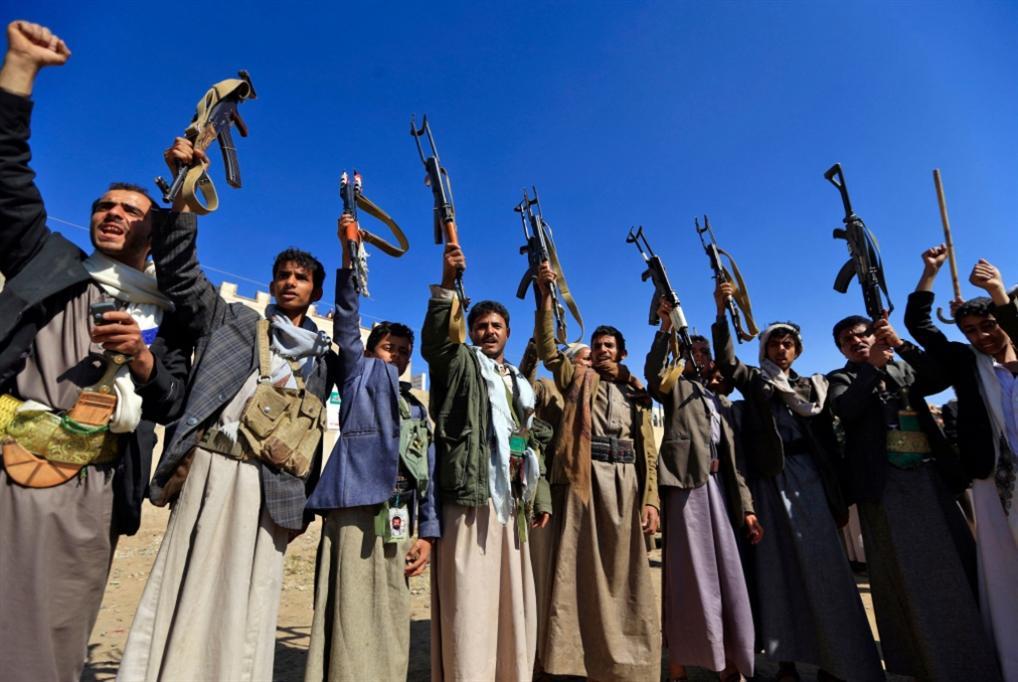
Sana‘a | Ten years after the September 21, 2014 revolution, Ansar Allah in Yemen has become a military force with regional weight. Sana‘a celebrated the tenth anniversary of the revolution with more military operations against the Zionist entity, vowing that its attacks will continue, escalate and expand in the coming days. In this context, the British Maritime Trade Operations Authority reported yesterday evening that a merchant ship was attacked by Sana‘a forces in international waters south of the Red Sea. This operation is one of several operations carried out over the past days, targeting ships in the Red Sea and the Gulf of Aden with naval missiles and drones, sources in Sana‘a told Al–Akhbar.
This comes as Sana‘a prepares for a regional battle in the event of the expansion of the Zionist aggression on Lebanon, and confirms its intention to enter into a ground confrontation with the entity, which a number of observers talked about to Al–Akhbar. They explained that Ansar Allah‘s promises of a ground confrontation with the Zionist regime will not translate inside Yemen if a proxy war is opened by militias loyal to the coalition.
The entity will not only scheme inside Yemen in the event of the opening of a proxy war by militias loyal to the Saudi–Emirati coalition, but the movement will also participate in Arab fronts within the framework of the “unity of the fronts.” At a time when Sana‘a is moving to raise the rate of its operations, in conjunction with the expansion of the Zionist aggression on Lebanon, the Russian agency “Sputnik” recently reported the arrival of Yemeni fighters to Syria, as part of the response to the aggression on the port of Hodeidah, weeks ago. The agency said Sanaa forces sent a military brigade to Syria, in small groups across Jordan, with senior Syrian–Lebanese intelligence coordination. It stressed that the Yemeni force that arrived in Syria is one of the strongest, most prepared and equipped combat formations of Ansar Allah, and that it has been trained over the past months to attack targets simulating settlements and military bases belonging to the entity.
At this time, and in celebration of the anniversary of the revolution, Sana‘a is witnessing military parades today, in which Ansar Allah shows the extent of its growing military capabilities during ten years of war and siege, and also confirms the failure of all attempts to abort the revolution that overthrew the rule of foreign embassies and ended the era of tutelage. Today also evokes the anniversary of the “Peace and Partnership Agreement” signed by the movement at the time with other partisan forces under the auspices of the United Nations, in which the movement affirmed its desire to end economic imbalances and lead a comprehensive reform phase that ends the suffering of Yemenis resulting from the spread of corruption and the faltering development path during the past decades, and the state‘s failure to extract its natural resources due to external pressures. Despite the support of the United Nations and the Security Council for the aforementioned agreement, the arrival of Ansar Allah to the capital and its imposition of its control over it alarmed the United States and the Zionist entity, which prompted Washington to move its tools in Yemen to demand the withdrawal of the movement‘s elements and the surrender of its weapons, after its leader, Abdul Malik al–Houthi, attacked Washington and its allies in the region, and vowed in his first speech after the success of its leader, Abdul Malik al–Houthi, promised Washington and its allies in the region, in his first speech after the success of the revolution, to stand by the Palestinian people, adhere to the just central cause of the nation and move on the road to Jerusalem.
This speech, which some described as a victory speech, was not the only one that angered America and raised the Zionist regimes fears, but the Houthis had previously delivered several speeches, directed at home and abroad, in which he revealed the features of the future of Yemen and the movement together. At that time, the course of war with neighboring countries was unlikely, so the movement engaged within the framework of a government of partnership from all parties, calling for the start of the phase of economic and administrative reforms, according to a scheduled government program. However, Saudi Arabia launched economic and administrative reforms, according to a scheduled government program. However, Saudi Arabia launched a military war on Yemen that lasted ten years, during which it was able to thwart the development project that the movement promised to implement with partners, but it pushed Ansar Allah to move towards military industrialization and military production, which happened during the past years of aggression and siege, where the movement was able to overcome the large difference in weapons and capabilities, and proceeded with popular support towards a comprehensive confrontation with the Zionist entity and its American ally, since announcing the entry into the battle of the “Al-Aqsa flood” late Last October.